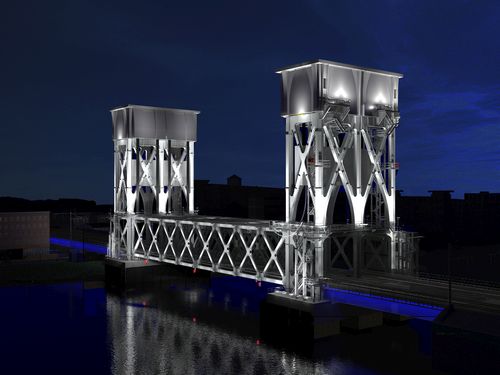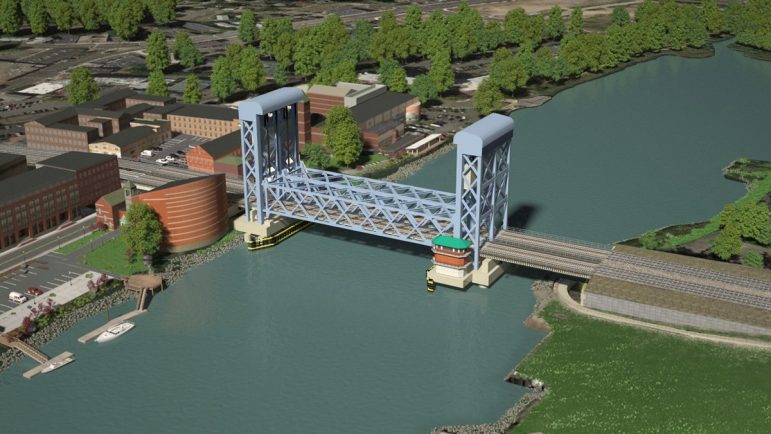On a recent hot, spring afternoon I was waiting at a Metro-North station to pick up a friend arriving from NYC when the platform PA system made an ominous announcement:
“Due to a draw bridge failure at Cos Cob, the 4:28 train to New Haven is being held.”
Drawbridge failure? WHAT?!? Did the bridge collapse? No, apparently the bridge had been opened but wouldn’t close.
Sure enough, checking my phone I found an earlier text from the railroad warned me of the bridge opening, at least. And given the high temperatures that day and steel rails’ proclivity to expand, coupled with my knowledge of these old bridges, I shouldn’t have been surprised. This used to happen — a lot.
Since 2015 the railroad has issued text warnings to commuters of upcoming bridge openings so they can plan accordingly. Not that there are many alternatives if the bridge closing fails, aside from the railroad being able to say “Hey, we warned you.”
Bridge openings are controlled by the U.S. Coast Guard, not Metro-North. But for the past few years Metro-North has had an agreement with the Coast Guard to delay bridge openings when the railroad determines it may be too hot for them to close properly.
For the most part this has prevented incidents like the one recently at Cos Cob. And sometimes the bridges don’t close for reasons other than just the heat. They’re very old and replacement parts have to be hand-crafted.
Whatever the weather, Metro-North says it deploys a 15-person MOW (maintenance of way) crew at any bridge opening — just in case. They’re equipped with sledge hammers and, if the bridge closes and the tracks don’t align properly, they’re “nudged” back into place.
That’s right: 15 workers watching a bridge open and close.

Image from Metro-North
Artist rendering of the future Walk Bridge at night
Even if they’re not earning overtime (which they do, a lot), they make good money and could be working on other, much-needed repairs instead of watching a 100+ year-old bridge, right?
To keep the rails cool in hot weather they used to paint the bridge tops white and even sprayed water on the tracks. Sometimes that wouldn’t be enough.
The movable bridges between Grand Central and New Haven don’t usually open during weekday rush hours. Most of the water-borne traffic they serve are pleasure craft; but at the Walk swing-bridge in South Norwalk, there are also barges pushed by tugboats.

2009 photo by Peter Rivera from Wikimedia Commons
Walk Bridge, as seen from the south, on the west bank, where Norwalk River meets Norwalk Harbor.
That bridge, built in 1896, is undergoing a roughly billion-dollar rebuild (finishing in 2029) after one memorable Friday evening rush hour in 2013 when the bridge opened but would not close, just as thousands of rail passengers were trying to get home.
It took 90 minutes to finally close the bridge, delaying both Metro-North and Amtrak trains. The incident came just weeks after the derailment and collision of two Metro-North trains near Fairfield and just accentuated how old and unsafe the railroad had become.
Hopefully this won’t happen again this summer. But on hot days, just a heads-up to commuters: be prepared for “bridge failures” which may interrupt your journey.

Image from Metro-North
Artist rendering of what the replacement for the Walk Bridge would look like. The bridge spans the Norwalk River between South Norwalk and East Norwalk. As part of the project, the rounded brick building just to the left of the bridge is being torn down. The Maritime Aquarium is just north of the bridge.
____________________

Contributed photo
Jim Cameron
Jim Cameron has been a Darien resident for more than 25 years. He is the founder of the Commuter Action Group, sits on the Merritt Parkway Conservancy board and also serves on the Darien RTM and as program director for Darien TV79. You can reach him at CommuterActionGroup@gmail.com.
